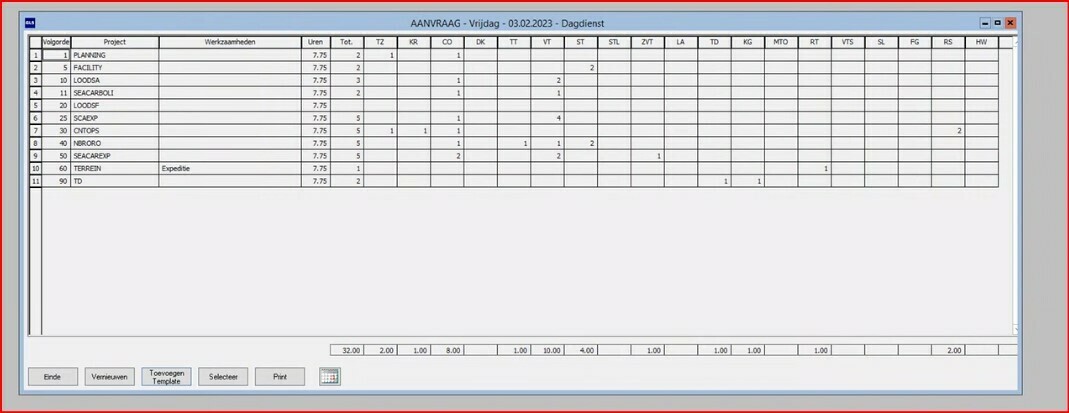Hi all,
(Sorry for the Title, no clue on how to summarize the problem)
But some guidance is very welcome !
I have a table, with ‘Functions’. E.G, cleaner, driver, crane operator, etc. So, a person has a Function. I also have a table with ‘Tasks’. E.G. ‘Unload ship’, ’Clear deck’, ‘Load container’ .
Each Tasks needs a number of Functions. Unloading a ship needs 3 unloaders, 1 cleaner and 1 driver.
So, this looks like this in very old software; on the left a column with all the Tasks, and in columns all the Functions. Here the user can specify how many of each Function is needed. Note; Functions can be created by the end-user, so it can be 4 or 182. Same of course for the Tasks.

After entering all the values with how many people are needed per Task/Function, this needs to be saved somewhere. Not sure on the where and how of this.
How can something like this (no need to be an exact copy, but the usability needs to be same same) be developed for the Universal gui?
Any advice on this is very welcome!
Thnx!
Alex





